Pop quiz! Which of the following questions is more engaging?
- Taking everything into consideration, how would you rate the restaurant on its overall state of cleanliness?
- How clean was the restaurant?
- Do you think the restaurant was neat and tidy and the service was also good?
If you’re someone that actually knows how humans communicate, you’d probably see which one is more engaging (for the record, it’s number 2). But what’s funny is that we often see researchers write questions that look exactly like the other two versions. These types of questions are either too long or just use confusing language.
We’re not trying to be hard on researchers – survey design is hard. Sometimes, mistakes like the one above happen because researchers want to get the most out of the insights. Sometimes, it’s because survey designers forget about the respondent’s experience.
Why should I care about making surveys engaging?
You’ll get more accurate data
If survey takers/respondents aren’t engaged by a survey, they’ll likely give superficial or straight-up inaccurate responses. This will affect the quality of the data and make the survey results relatively ineffective. That’s why an engaging survey = the goal.
You’ll get a higher survey completion rate
People are always busy. When they see that a questionnaire has very long sentences, uses unknown industry jargon or confusing words, they are likely just to quit the survey altogether. So, an engaging survey = a fully completed survey.
You’ll get the most honest responses
Survey respondents are real people, and they want to be treated that way when they’re taking a survey. It follows that if the survey experience is exciting and people actually feel like their opinion matters, they will likely give you real, honest answers. An engaging survey = more genuine responses.
Tips for an engaging survey design
1. Start with an exciting intro
“Thanks. This survey will take 5 mins.”
You might be thinking that exciting and survey don’t belong in the same sentence. We tend to disagree – excitement is all relative! But seriously, that kind of attitude is the reason a lot of people don’t like surveys: they start on a “meh” or overly formal note, so you continue responding to questions with “meh” or overly formal answers.
People are pretty happy to provide their opinions, especially in categories they are passionate about. Help them feel excited to participate in your study right from the start.
- Let them know they were specially selected to participate (everyone wants to feel like a snowflake)
- Remind them that their opinion is important to you, and you want to hear it!
- Frame their “mission” – what will they see in your survey, and what will they need to do? Try to make it sound fun and exciting!
- Feel free to include images or gifs to set the stage
Here’s what we mean by an exciting intro:
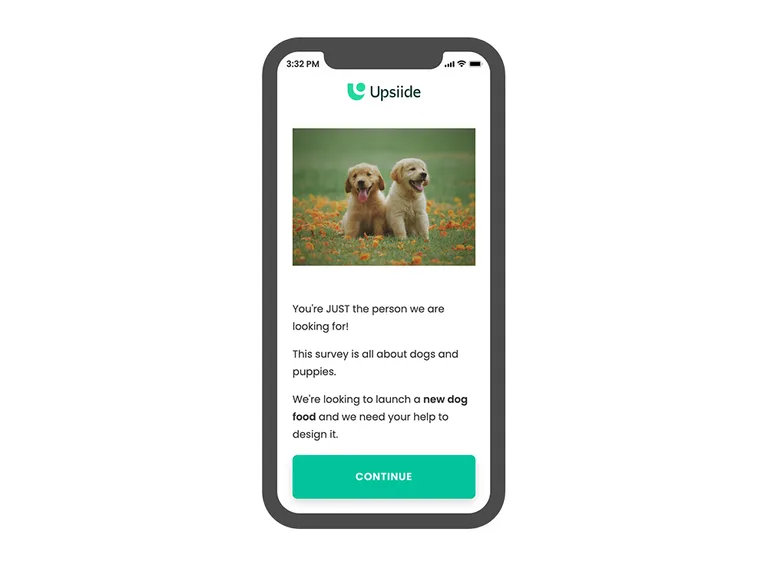
2. Keep surveys fresh and avoid too much repetition
How many Likert scale questions do you need to answer before you stop paying attention? It’s not like we have a problem with Likert scales. It’s more about having a variety of question types.
Here are some other types of questions that you could use:
- Carousel-style grid questions are perfect if you have a question, a variable and different answer options.
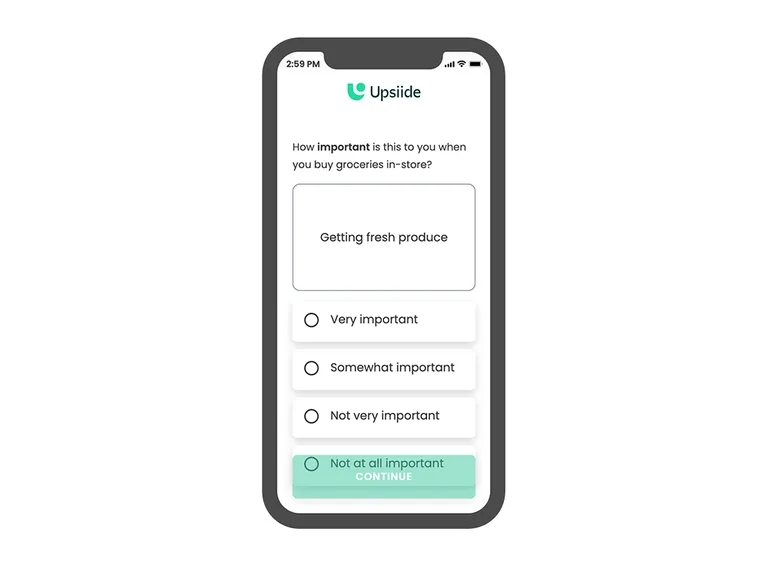
- Emoji questions are great for capturing real consumer reactions to an idea.
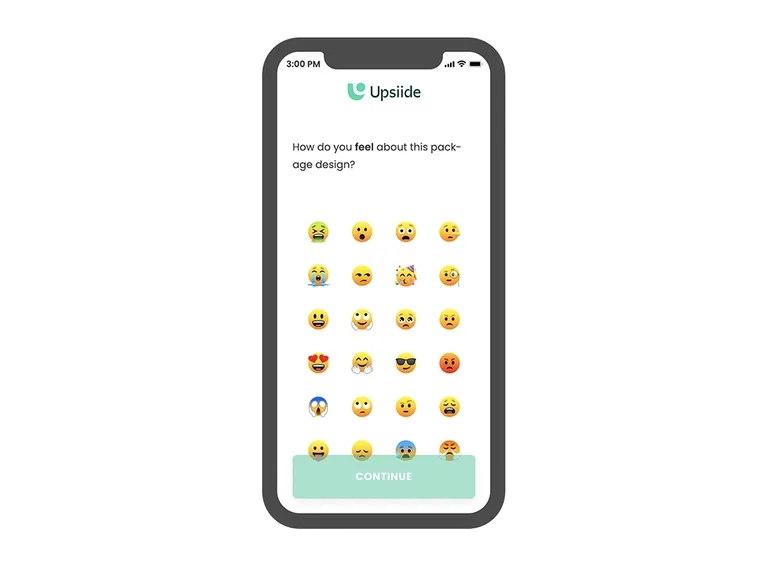
- Open-ended questions allow respondents to give their honest opinions in their own words.
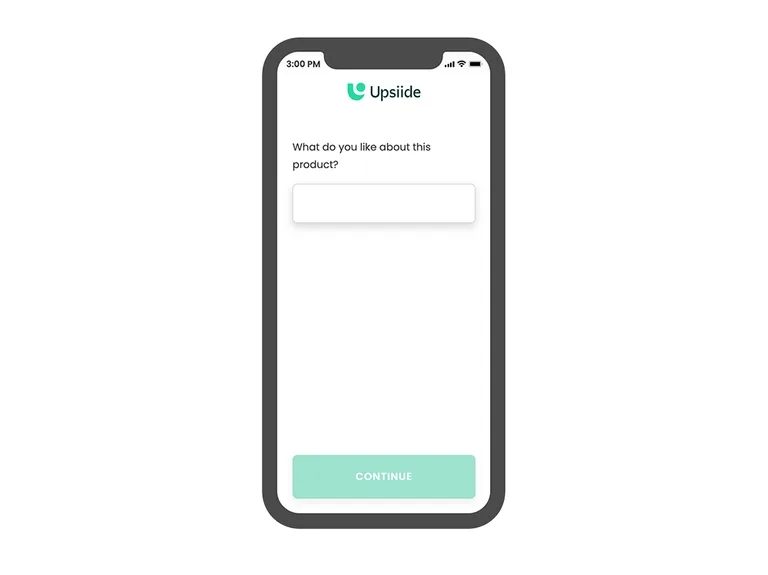
- Swiping exercises are especially useful if you want to show people different ideas and see which one they like most.

Lucky for you, Upsiide has all these types of survey questions! Our approach to idea screening borrows from mobile behavior, so it feels like social media. Learn more here.
P.S. We’re not saying “Go crazy and use every question type just because”. Though we do love the enthusiasm!
3. Keep surveys short and focused
Long. Surveys. Stink.
We’ve been in the biz long enough to notice that questionnaires often, you know, go onnnnn if you don’t have a clear research objective. It’s easy just to want to gather as much data as possible, but that can confuse the people answering the questions.
Ask yourself:
- What am I looking to get out of my study?
- Which data points will be the most important to me?
You’ll realize that you’ll only need to include questions that are crucial to your research objective to have a good survey. Having a sense of direction will also help you decide what type of question will work best (maybe you don’t actually need all 5 of those emoji questions?).
In practice, keep your surveys between 5-10 mins in length. Adding open-ended questions is great, but use them thoughtfully and sparingly (ideally fewer than 3 per survey), as these can be quite a bit of work for respondents.
We’ve got more tips for writing survey questions to help you upgrade your survey design skills. Discover them at the link below.
4. Consider using visuals
You’ve got Instagram, you get it – visuals are great. They help people understand what you mean and get more interested in the survey process. One of the best ways to get respondents engaged is to prompt them with visuals, such as videos, pictures or GIFs. These can be used when asking questions or giving answer options. But make sure that you use visuals where it makes sense (e.g. when you’re trying to explain an unfamiliar idea).
Here’s a quick example:
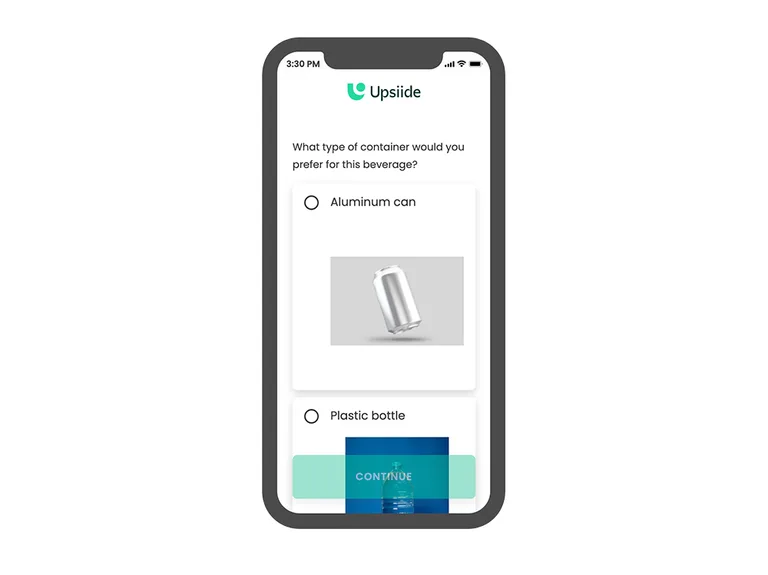
5. Formatting matters
People are often on the go and probably don’t have time to double-check questions or sentence structure. That’s why you’ve got to format with intention. Highlight the most important parts of your questions. Bold or underline keywords to draw your respondents’ attention to a particular aspect of the question. This will help them read questions more easily and improve the survey experience.

You are ready to make engaging surveys, young Padawan!
At Upsiide, we see firsthand that thoughtfully designed questions lead to more thoughtful answers. Check out our Support Centre for more tips and tricks about conducting agile market research with Upsiide. May the Upsiide force be with you ✨